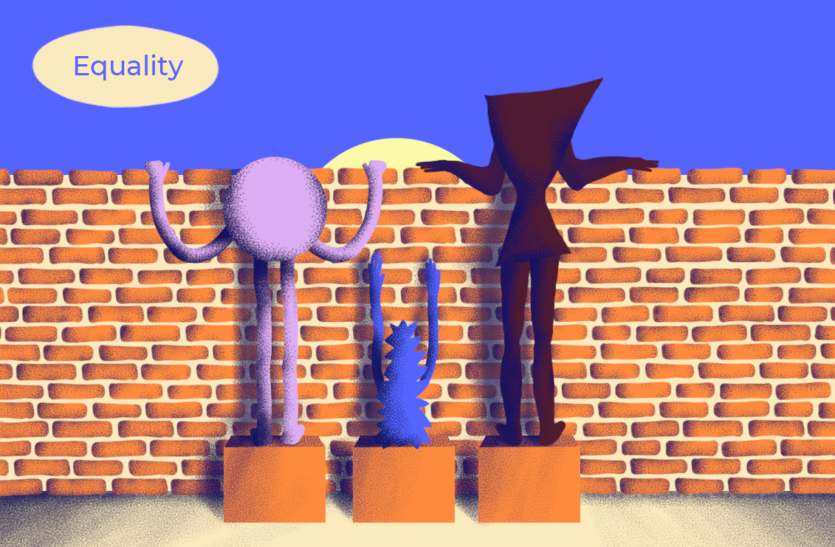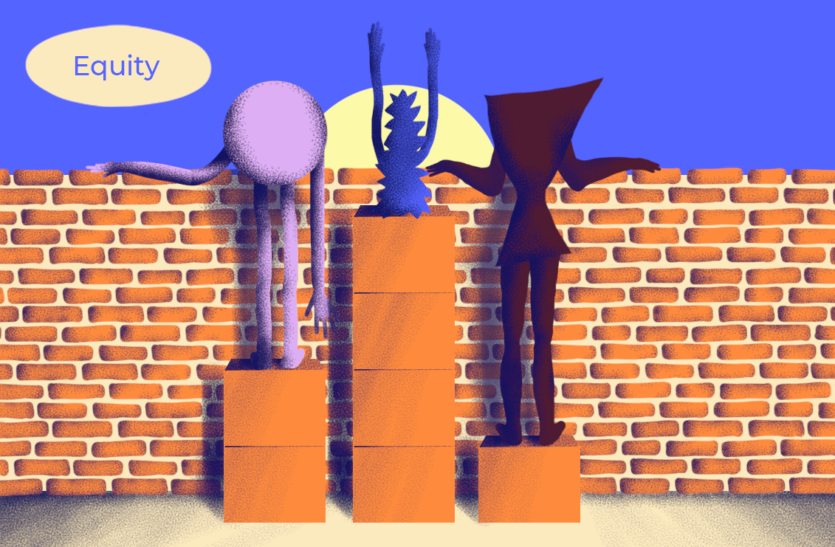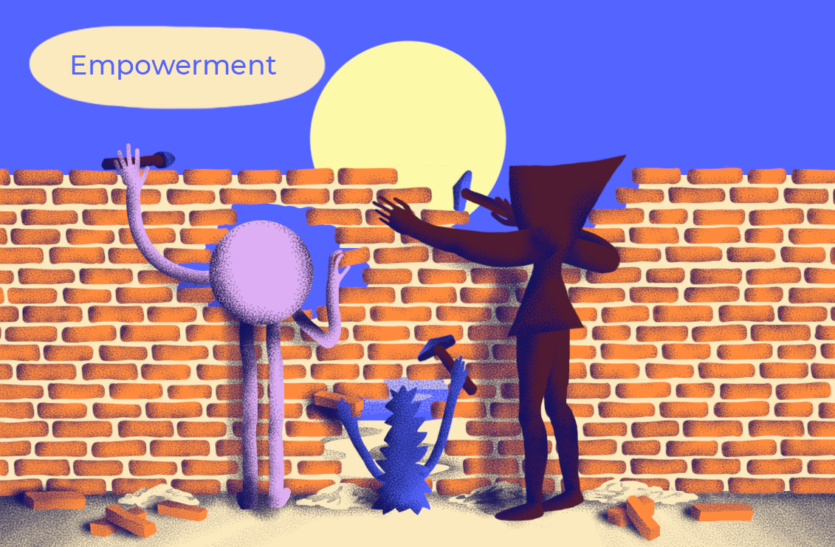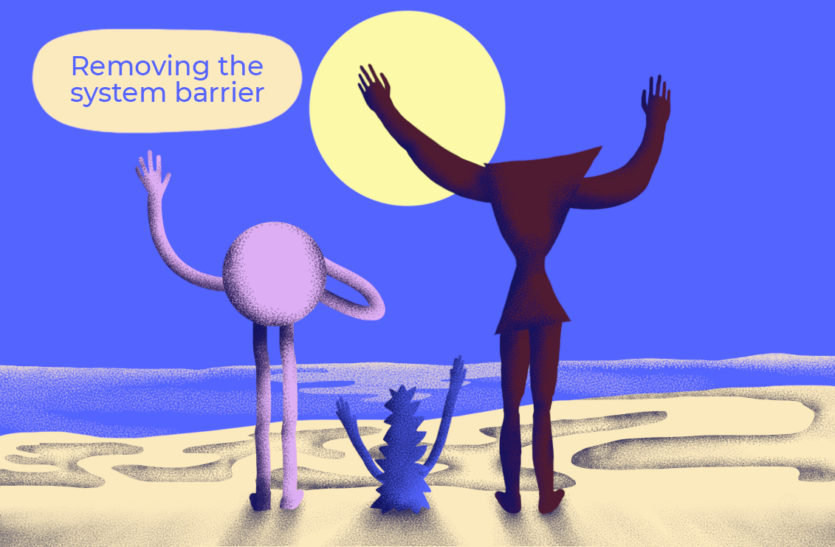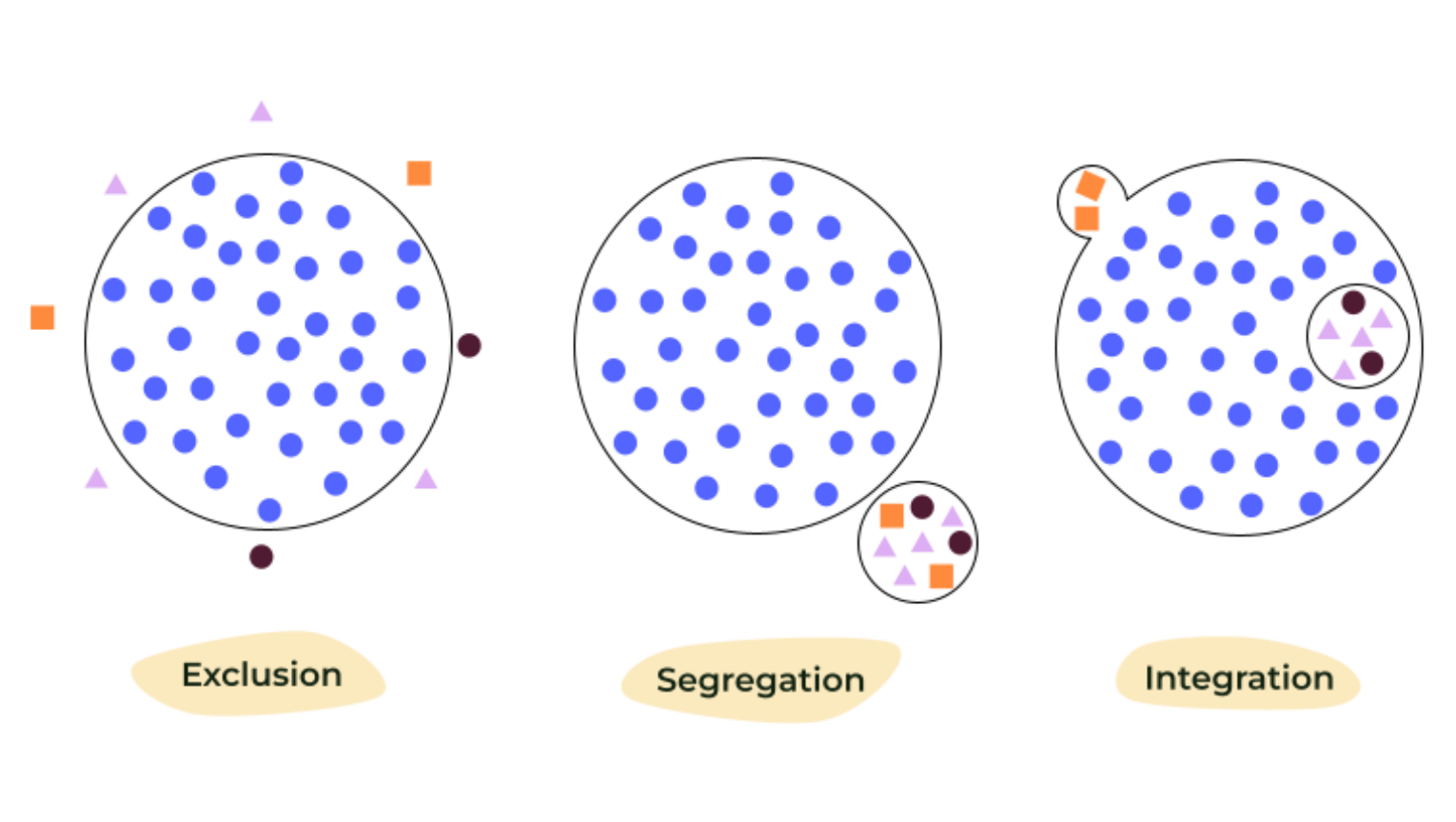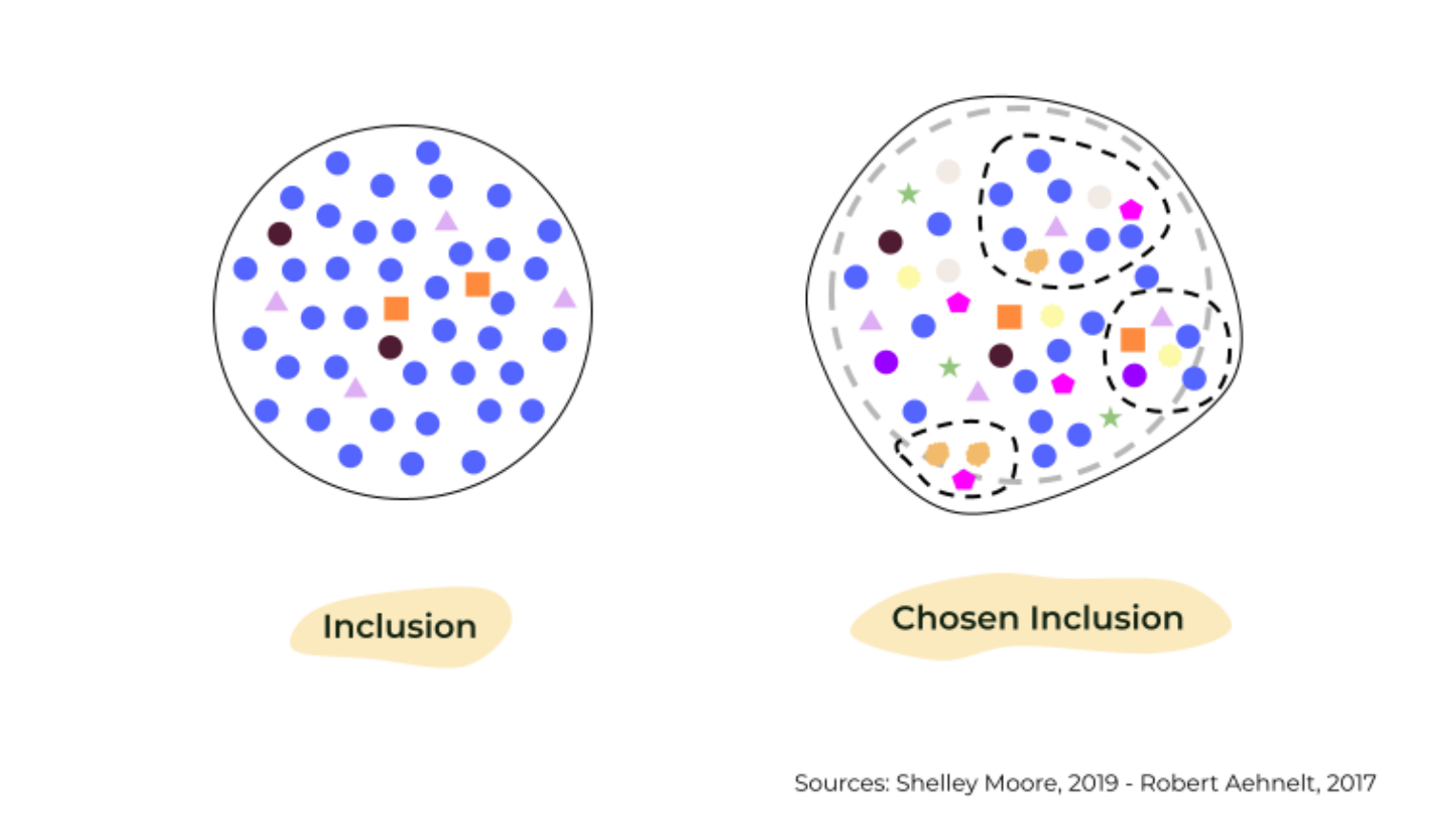Key Principles
Let's walk you through some concepts before you dive into the tool created and curated by Diversci. This will help you understand our lenses and what we stand for. For those already familiar with these concepts this is a friendly recap, for others it could be the first stop on your journey to transform your organisation.
Equality versus Equity
EQUITY IS A WAY TO DEAL WITH DIFFERENT NEEDS AND OPPRESSION WITH SOCIAL JUSTICE LENSES.Equality and Equity are often used interchangeably, yet they have two different meanings and describe different outcomes and processes. Equality is about treating everyone the same whereas equity refers to treating everyone fairly. Equality strives for fairness but does not consider individual needs, situations and oppressions. This is why equal treatment can result in inequality.
Equality is represented in the illustration below (upper left). We can see 3 persons standing on one box to help them see the landscape beyond the wall. Each box is the same size for each person. The tallest person can see best, the middle-sized person can barely see over the wall and the smallest person can’t see at all.
In the Equity illustration (upper right), we still see the same three people but this time they can ALL see over the wall. The smallest person stands on four boxes so that they can see beyond the wall. The tallest person is left with one box and the middle-sized person with two because that’s all they need in order to see the landscape beyond the wall. Equity requires an understanding of people’s current situation.
Long term equity is a collective responsibility. It focuses on addressing the source of inequality and fixing the system in a sustainable, equitable way through Empowerment and collaboration to ensure true equality (lower left). In the last illustration (lower right), the cause of inequality has been removed so the three people can enjoy the landscape.
Exclusion & Inclusion
INCLUSION IS AN ACTIVE SOCIAL PROCESS OF SYSTEMIC TRANSFORMATION.Exclusion happens when individuals and groups are denied access to an environment or resources, or experience discrimination or oppression. Exclusion can also take the form of gatekeeping when access to particular resources or opportunities are controlled.
Segregation, Integration and Inclusion are different ways of ending exclusion. These three different approaches differ in their values, strategies, methods and practices.
Segregation (illustration below - upper left) creates limited accessibility in separate places using different resources.
Integration (upper middle illustration) takes place when the excluded groups are still perceived and treated as distinct, and are expected to adjust and change to belong. Integration results in inequitable and restricted access.
Inclusion (lower illustrations) is a process based on change and acceptance. Inclusion is an equitable and participatory approach that creates the condition of accessibility that fits everyone's needs, requirements and preferences, so all can belong. Inclusion is a multi-dimensional process aiming to create conditions which enable full and active participation of every member of society in all aspects of life. Inclusion is not forced on people and participation is a choice (lower right), where every individual or group is welcomed, respected, supported and valued.
